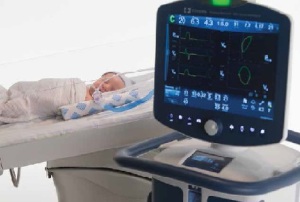by
Lisa Chamoff, Contributing Reporter | May 26, 2015
From the May 2015 issue of HealthCare Business News magazine
In the decades since ventilators first made their appearance in the ICU, they’ve evolved from machines that ran on manually calculated settings dialed in by respiratory therapists to high-tech devices that utilize software to manage ventilator function and get the right mix of pressure flow and volumes for each patient.
But the challenges of lung injury, infection, and weaning remain. In recent years, strides have been made to address these issues, including manufacturers returning to creating neonatal-specific platforms in addition to infant-to-adult models. Both have been improved with features designed to better outcomes and enhance patient safety, connect to electronic records systems and make the devices easier to use.
Prioritizing patient safety
Enhancing patient safety is the goal with all mechanical ventilators, including adult devices, with features such as prioritized alarm messages, troubleshooting guides embedded in the user interface, and customizable data displays, says Edwin Coombs, director of marketing for intensive care and neonatal care with Draeger Medical.
Automated weaning software is also now common, such as the Smartcare/PS in Draeger’s V500 ventilator, and others, including Hamilton Medical’s Adaptive Support Ventilation, Covidien’s Proportional Assist Ventilation and Maquet’s Neurally Adjusted Ventilatory Assist. This technology can assess a patient’s readiness to wean from mechanical ventilation and alter the level of support according to the assessment of physiologic parameters. “The result is a reduction in weaning time and length of admission in the ICU, which can translate into a significant cost reduction and greater customer satisfaction,” Coombs says.
Another trend is improving workflow design through mechanical ventilation. For example, Draeger ventilators have the capacity to deliver invasive ventilation, non-invasive ventilation, which other manufacturers offer, as well as oxygen therapy, so caregivers can use one device, decreasing the amount of disposable circuits and avoiding clutter at the bedside, which Coombs says improves efficiency and reduces cost of care.
Despite the strides made, however, especially with the advent of complex algorithms in the latest ventilators on the market, expert knowledge is still crucial to successful outcomes, says Dr. Aliaksei Pustavoitau, medical director of respiratory care services at The Johns Hopkins Hospital in Baltimore, who is now testing four of the newest models from leading ventilator manufacturers, including Covidien, Draeger, GE, and Hamilton Medical, “to see if they do what they claim,” Pustavoitau says. His institution is looking to replace its aging ventilators in the next five years. He feels that the biggest change he has seen from older machines to the latest ones is that “the computer and processing power has become different,” Pustavoitau says. “That’s where the greatest range of possibilities lie.”
